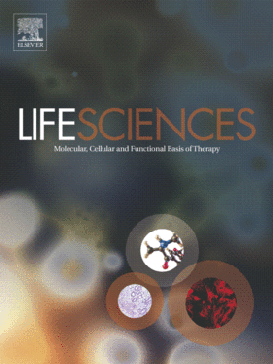
“Cannabinoids have been used for many centuries to ease pain and in the past decade, the endocannabinoid system has been implicated in a number of pathophysiological conditions, such as mood and anxiety disorders, movement disorders such as Parkinson’s and Huntington’s disease, neuropathic pain, multiple sclerosis, spinal cord injury, atherosclerosis, myocardial infarction, stroke, hypertension, glaucoma, obesity, and osteoporosis.
Several studies have demonstrated that cannabinoids also have anti-cancer activity and as cannabinoids are usually well tolerated and do not produce the typical toxic effects of conventional chemotherapies, there is considerable merit in the development of cannabinoids as potential anticancer therapies.
Whilst the presence of psychoactive effects of cannabinoids could prevent any progress in this field, recent studies have shown the value of the non-psychoactive components of cannabinoids in activating apoptotic pathways, inducing anti-proliferative and anti-angiogenic effects.
The aforementioned effects are suggested to be through pathways such as ERK, Akt, mitogen-activated protein kinase (MAPK) pathways, phosphoinositide 3-kinase (PI3K) pathways and hypoxia inducible factor 1 (HIF1), all of which are important contributors to the hallmarks of cancer.
Many important questions still remain unanswered or are poorly addressed thus necessitating further research at basic pre-clinical and clinical levels. In this review, we address these issues with a view to identifying the key challenges that future research needs to address.”
http://www.ncbi.nlm.nih.gov/pubmed/26852955
http://www.thctotalhealthcare.com/category/cancer/
 “The endocannabinoid system has emerged as a considerable target for the treatment of diverse diseases.
In addition to the well-established palliative effects of cannabinoids in cancer therapy, phytocannabinoids, synthetic cannabinoid compounds as well as inhibitors of endocannabinoid degradation have attracted attention as possible systemic anticancer drugs.
As a matter of fact, accumulating data from preclinical studies suggest cannabinoids elicit effects on different levels of cancer progression, comprising inhibition of proliferation, neovascularisation, invasion and chemoresistance, induction of apoptosis and autophagy as well as enhancement of tumour immune surveillance.
Although the clinical use of cannabinoid receptor ligands is limited by their psychoactivity, nonpsychoactive compounds, such as cannabidiol, have gained attention due to preclinically established anticancer properties and a favourable risk-to-benefit profile.
Thus, cannabinoids may complement the currently used collection of chemotherapeutics, as a broadly diversified option for cancer treatment, while counteracting some of their severe side effects.” https://www.ncbi.nlm.nih.gov/pubmed/30019449
“The endocannabinoid system has emerged as a considerable target for the treatment of diverse diseases.
In addition to the well-established palliative effects of cannabinoids in cancer therapy, phytocannabinoids, synthetic cannabinoid compounds as well as inhibitors of endocannabinoid degradation have attracted attention as possible systemic anticancer drugs.
As a matter of fact, accumulating data from preclinical studies suggest cannabinoids elicit effects on different levels of cancer progression, comprising inhibition of proliferation, neovascularisation, invasion and chemoresistance, induction of apoptosis and autophagy as well as enhancement of tumour immune surveillance.
Although the clinical use of cannabinoid receptor ligands is limited by their psychoactivity, nonpsychoactive compounds, such as cannabidiol, have gained attention due to preclinically established anticancer properties and a favourable risk-to-benefit profile.
Thus, cannabinoids may complement the currently used collection of chemotherapeutics, as a broadly diversified option for cancer treatment, while counteracting some of their severe side effects.” https://www.ncbi.nlm.nih.gov/pubmed/30019449


 “Endocannabinoids are bioactive lipids that modulate various physiological processes through G-protein-coupled receptors (CB1 and CB2) and other putative targets. By sharing the activation of the same receptors, some phytocannabinoids and a multitude of synthetic
“Endocannabinoids are bioactive lipids that modulate various physiological processes through G-protein-coupled receptors (CB1 and CB2) and other putative targets. By sharing the activation of the same receptors, some phytocannabinoids and a multitude of synthetic 



